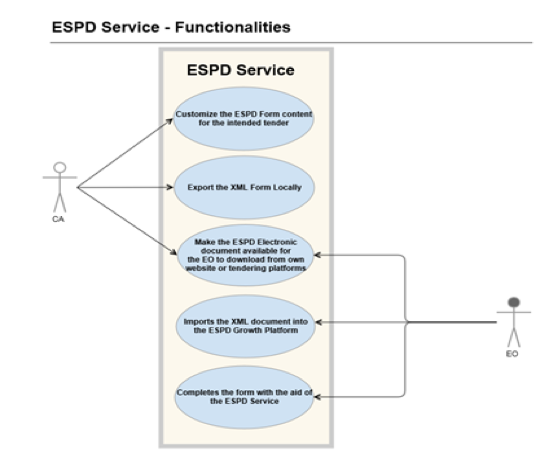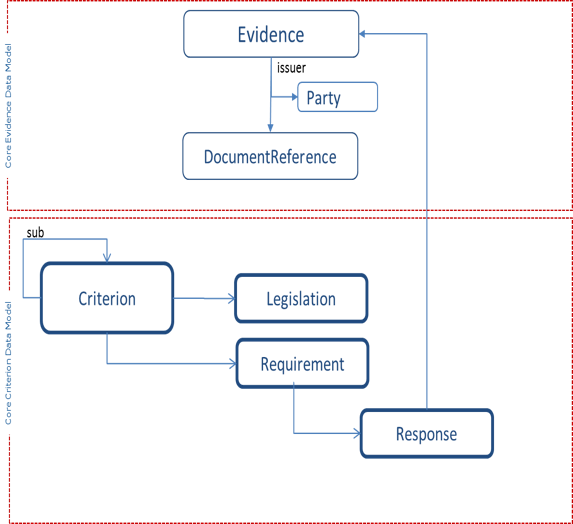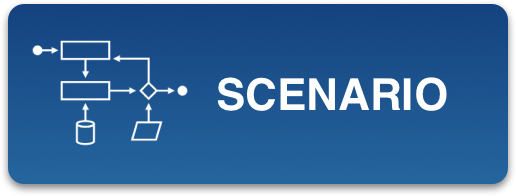The contents included in this section are DRAFTS proposed for a public consultation and are under review.
Scenario
Policy
E-procurement is one of the enabling Digital Service Infrastructure (DSI), i.e. projects that are supported by the CEF building blocks across policy domains.
These DSIs are in the framework of the Connecting Europe Facility initiative established by the Regulation (EU) N° 1316/2013 of 11 December 2013.
E-procurement can significantly simplify the way procurement is conducted and deliver better procurement outcomes by stimulating greater competition across the Single Market. EU's eProcurement Digital Service Infrastructure allows full cross-border interoperability in electronic public procurement.
Going deeper in the eProcurement DSI, and following the Public Procurement Directives dated April 2016, e-Submission (part of the whole eProcurement DSI) will become mandatory for all Member States procurers and contracting authorities. This means that all tender submissions will have to be executed by electronic way, including the documents exchange among the procurer/contracting authorities and the companies.
In particular eNotification and eAccess (parts of the whole eProcurement DSI) have to be in place in 2016 and eSubmission in 2018.
The directives which build the eProcurement policy framework are:
eProcurement service released
eProcurement DSI enables full interoperability across MS in the public procurement activities managed electronically. The infrastructure built for running eProcurement makes available some basic services:
- e-Certis: a tool for supporting MS buyers and bidders companies in identifying attestations, certificates, and other kind of documents requested to verify the eligibility to a tender;
- ESPD Web Services: the European Single Procurement Document (ESPD) is a self-declaration used as preliminary evidence of tender eligibility (exclusion and selection grounds). Only the winning tenderer has to provide the actual evidence, while the request for documentation is issued by the proper authorities. The ESPD service is the electronic version of the ESPD (https:// ec.europa.eu/espd).
Further information are available at the following links:
• European Single Procurement Document and e-Certis
• European Single Procurement Document (ESPD)
Benefits
The use of an ICT tool in order to automate, even partially, public procurement, gives a lot of benefits, including:
- savings in money, time and effort for all tendering stakeholders (including administrations);
- procurement processes shortened and simplified thanks also to compliance ensured with National and EU rules;
- increasing of the transparency of procurements and tenders;
- innovation and interoperability;
- increasing of competition opportunities for small and medium-sized enterprises (SMEs) in public tenders;
- increasing public procurers professionality.
Further information are available at the following link:
Procurement needs
The primary need of a procurer that has to issue an European tender, is to be able to easily manage all the documents that bidders provide in order to prove their eligibility and the fulfillment of requested criteria.
Eligibility and tender criteria fulfillment have to be transparent in order to enhance the efficiency of the whole tendering process.
For these purposes, an online tool accessible both to procurers and bidders can allow effort reduction in the identification of single Member State regulation, also facilitating to avoid mistakes that could invalidate the tender.
The analysis of the situation in the whole EU about the automation of public procurement is released periodically by DG Growth, in a report on the public procurement situation per Member State in the form of a scoreboard.
The last one has been released at this link:
• The EU Single market scoreboard
Other relevant sources are available at:
• Studies, data and expert groups
Standards
The following contents represent the starting sources adopted to draft the list of standards that can be downloaded in the domain excel spreadsheet for consultation.
The regulation context that introduces eProcurement is based on the following:
- Commission Implementing Regulation (EU) 2016/7 establishing the European Single Procurement Document (ESPD)
- Article 59 of the new Public Procurement Directive 2014/24/EC
- Due to eDelivery CEF Building Block basis, eProcurement is closely related to Regulation (EU) 910/2014 on Electronic identification and trust services (eIDAS);
- The Building Blocks and the whole CEF are implemented via annual Work Programmes in accordance with the Regulation(EU) 283/2014.
Common Standards
eProcurement reuses eDelivery CEF Building Block (BB), for the eTendering interface in order to connect the various MS eTendering systems. CEF Building Blocks standards have been assessed within the Common Assessment of Standards and Specifications for eGovernment framework.
It is possible for the stakeholders to develop, and test, specific software components that are interoperable with the eDelivery DSI, or when buying software that satisfies these requirements.
CEF makes available a service package, listed as follows, that helps stakeholders to be compliant with the standards and technical specification, providing them software, services, documentation and tools also for using the Building Blocks.
In the following table technical specification used in this Building Block are reported.
|
|
|||||
Access Point |
SMP |
SML |
Connector |
Trust Establishment |
|
Technical Specifications |
e-SENS SMP profile | ETSI REM profile | ETSI electronic signatures and infrastructures profile | ||
Software |
Consult vendors | Consult vendors (coming soon) | Consult vendors (coming soon) | ||
Managed Services |
SML service | PKI service | |||
Testing Services |
|||||
Supporting Services |
|||||
Onboarding Services |
|||||
Source: eDelivery Building Block Technical Specifications
In addition to these standards and technical specifications, all the standards referenced in the Building Blocks specifications (including Security and Privacy Standards - e.g. ISO 27001) were identified and aggregated in the excel data collection.
Use Case 1: Integrating ESPD Data Model
In order to spread the usage of the ESPD tools, the EC established an on-line web service available for suppliers and buyers.
The ESPD Service was designed to provide ICT solutions that can be fully interoperable in Europe. This solution is based on a data model and artefacts for the exchange of the ESPD between any Procurement stakeholder’s system.
The ESPD Service allows the Contracting Authorities (CA) and the Economic Operators (EO) to manage (edit, import, export, share, etc.) two typologies of electronic documents:
- The ESPD Request: is a document that is sent by the CA to the EO;
- The ESPD Response: the document that is filled-in by the EO stating whether they fulfil or not the criteria required in the ESPD Request, and providing the evidences that proves the criteria’s meeting.

This Use Case aims to facilitate the understanding of the model enabling the implementation of ESPD XML documents into a national procurement system, depicting examples and rules of an ESPD XML document (how it should look like and how it should be interpreted).
This Use Case is mainly addressed to Member States development teams, Economic Operators, Information Providers or any other stakeholder interested in.
Use Case 2: eESPD Service Open Source
DG GROW makes available to Member States and their development teams an open source version of eESPD Service, fully compatible with the ESPD data model.
Member States can reuse and customize this version, without modifying the data models in order to integrate the eESPD Service into their national procurement systems.

eESPD Service Open source Diagram
Guidelines
The eProcurement services use the CEF Building Blocks, integrated among them and/or with other services, in order to create complex services.
The Building Blocks and the whole CEF are implemented via annual Work Programmes that have to follow the guidelines defined by the Regulation(EU) No 283/2014 of the European Parliament and of the Council of 11 March 2014 on guidelines for trans-European networks in the area of telecommunications infrastructure and repealing Decision No 1336/97/EC.
In particular, as stated by the public procurement directives, ESPD is to be provided as electronic documents only (even if ESPD paper versions are still accepted until April 2018).
How to use ESPD:
- eESPD service provided by EC for free;
- Integrating ESDP Data Model into MS eProcurement services, including pre-qualification services if any;
- eESPD Service Open source version that is compatible with the ESPD data model. Each MS can tailor this version in order to integrate in it national needs;
- Using the Virtual Company Dossier (VCD) for managing eESPDs (buyers) and to benefit from an automated support in filling the eESPD correctly (tenderers).
e-Certis service, instead, supports the identification of different documents (including certificates, evidences, etc.) that need to be requested by the contracting authority, or to be shown by the prospective contractor, within the procurement or tender procedures across the EU.
For those companies that want to participate to a public tender, e-Certis gives them the list of documents that have to be shown in order to demonstrate their eligibility and/or the selection criteria for fulfillment.
In the same way, a procurer that receives documents from other Member State companies is enabled to make a correct evaluation of those documents, and to verify eligibility or selection criteria fulfillment.
However, e-Certis is not a legal advice service but only a reference tool. All information has to be recognized with the procurer or the contracting authority.
eESPD and e-Certis, as the whole infrastructure, enable the process of public procurement transformation in the EU countries. The aim is a significant reduction of administrative burden and a correspondent simplification in participating to cross-border tenders.
eESPD will reach its full potential when each stakeholder (Administration or single company) creates a repository that contains all documents usually necessary for participating to a tender linked to the eESPD.
Horizontals
A non-exhaustive list of other possible families of e-Document formats follows.
- Virtual Company Dossier (VCD) used by PEPPOL
- e-Document formats used by e-CODEX
For further informaton see: Analysis of structured e-Document formats used in Trans-European Systems
In relation to possible security issues, standards assessed by CAMSS and other standards specific for each Building Block are to be considered. Further references are also policy standards (e.g. ISO 27001:2013 and so on) and the definition of their specific usage in the Building Blocks context, if any.






